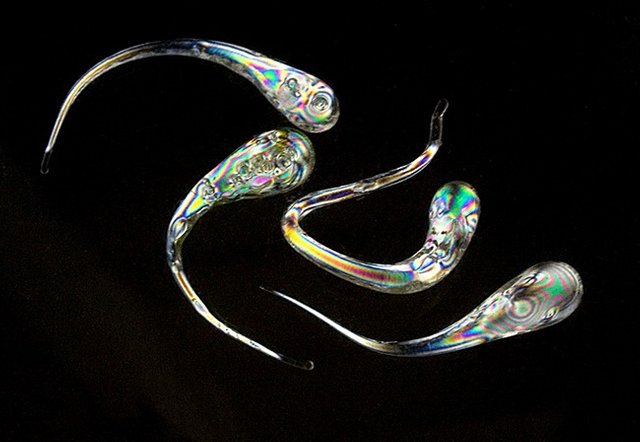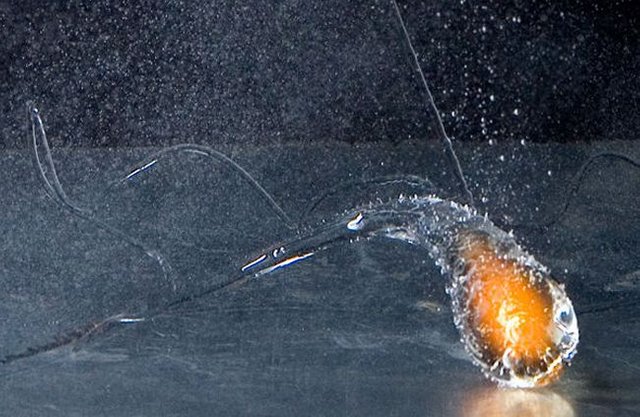Mystery of Prince Rupert's Drop

Photo from popsci.com
The photo captures the moment of explosion the glass drops Prince Rupert (Prince Rupert''s Drop), or "Danish tears." The drop head is incredibly durable, it is very difficult to mechanically damaged by compression: even strong blows of a hammer or hydraulic press do not cause her any harm. But is slightly dislocate the fragile tail, the entire drop in the blink of an eye will break into small pieces.
It is a curious property of the glass drops was first discovered in the XVII century in Denmark, in Holland (hence another name — the Batavian tears), in Germany (sources are conflicting), and the unusual thing quickly spread to Europe as amusing toys. The name of the drop was in honor of the commander of the English Royal cavalry of Rupert of the Palatinate, popularly known as Prince Rupert. In 1660, Rupert of the Palatinate returned to England after a long exile and brought with him an unusual glass drops that presented to Charles II, and he gave them to research in the Royal society of London.

Drawing from the site oberlin.edu
Technology of production of drops was kept secret, but in the end it turned out that it is very simple: enough to drip molten glass into a bucket of cold water. In this simple technology is the secret of strength and weakness drops. The outer layer of the glass quickly solidifies, shrinks and starts to push the still-liquid core. When the inner part is also cooled, the core begins to shrink, but now opposes it already frozen outer layer.
With the help of intermolecular forces of attraction he holds the cooled core, which now is forced to occupy a larger volume than if they were cooled freely. In the end, on the border between the outer and inner layers arise the opposing forces that pull the outer layer inward, and it is formed in the compressive stress and the inner core outward, forming a tensile stress. The interior may even break away from the outer, and then the drop forms a bubble.
This confrontation makes the drop harder than steel. But if it does damage the surface, breaking the outer layer, the hidden power of tension are released, and the place of injury along the entire drop will roll rapid wave of destruction. The velocity of this wave is 1.5 km/s, five times faster than the speed of sound in Earth's atmosphere.

Photo from popsci.com
The same principle underlies the production of tempered glass, which is used, for example, in vehicles. In addition to high tensile strength such glass has a big advantage in security: if damaged, it shatters into many small pieces with blunt edges. A typical "raw" glass shatters into large sharp shards that can seriously injure yourself. Tempered glass in the automotive industry are used for side and rear Windows. Windshield glass for cars doing multi-layered (laminated): two or more layers glued together with a polymer film, which upon impact keeps the pieces and gives them to scatter.
video from 
Source:



Such beauty in its destruction
Yeah, real mystery.